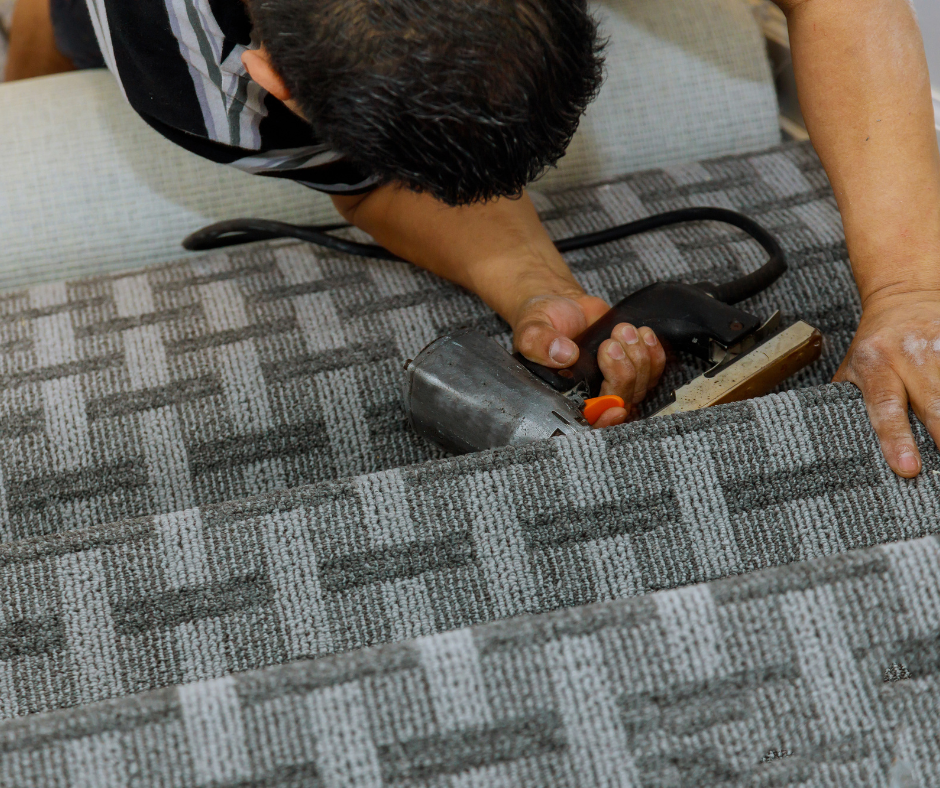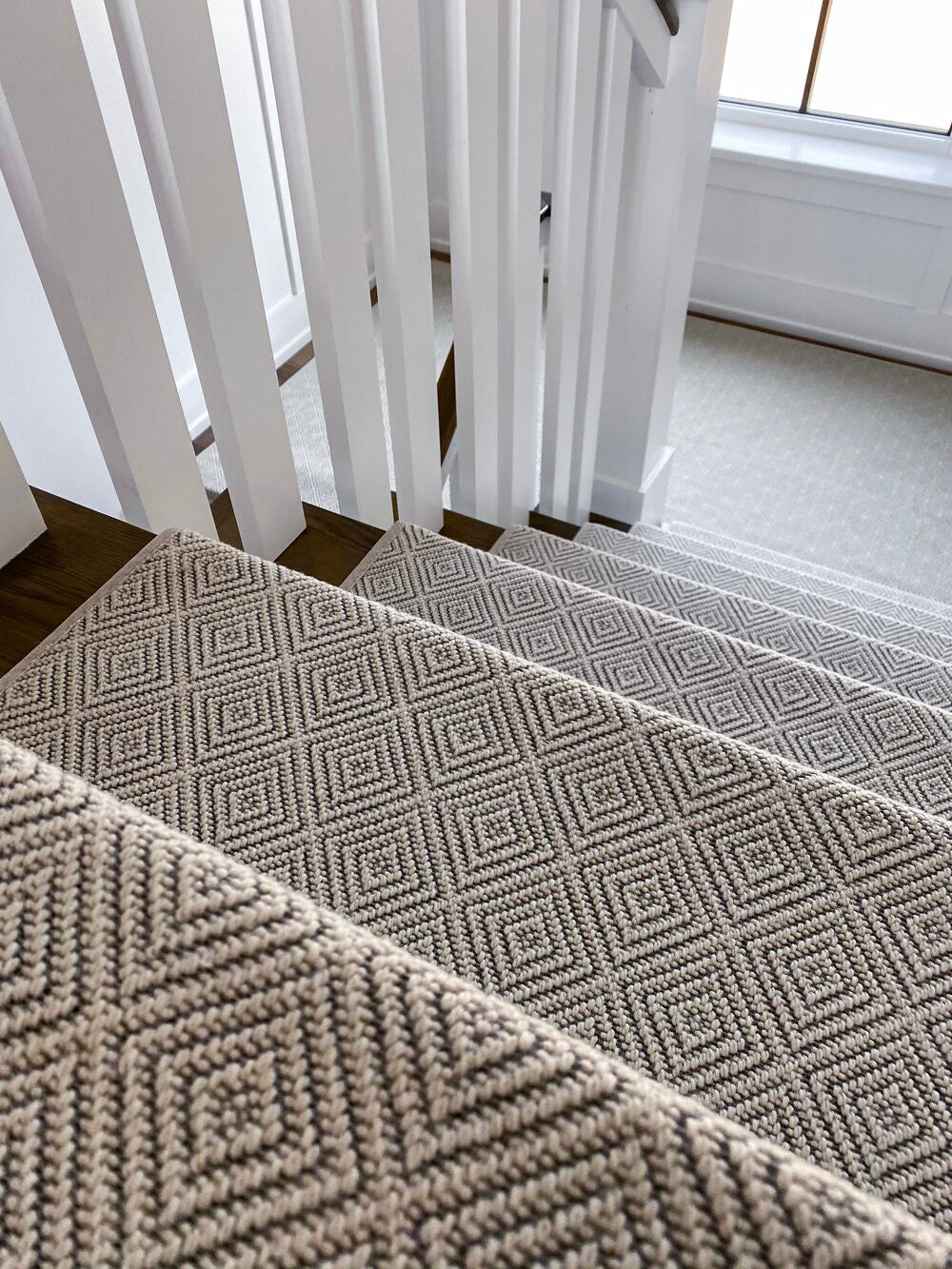Installing stair treads improperly can lead to safety hazards and premature wear.
The best nails for rubber stair treads are stainless steel or galvanized nails, as they provide strong durability, corrosion resistance, and a secure hold.
These nails prevent shifting and ensure long-term stability, making them ideal for both residential and commercial stairways.
Beyond nails, using adhesive alongside fasteners enhances the grip and longevity of your treads.
Whether you’re installing carpet stair treads or rubber options, proper installation techniques can make a significant difference in safety and appearance.
Keep reading to discover expert recommendations on nail selection, spacing, and installation best practices.
Understanding Interior Rubber Stair Treads
Rubber stair treads are a popular choice for homes and businesses due to their slip-resistant surface and sleek appearance.
They are durable, easy to clean, and customizable to match different interior designs.
One of the biggest advantages of interior rubber stair treads is their ability to withstand heavy foot traffic while maintaining their original shape and structure.
Unlike traditional carpeting, rubber stair treads do not fray or absorb moisture, making them ideal for high-traffic areas such as entryways, office buildings, and homes with children and pets.
However, securing them properly is essential.
Choosing the right nails ensures they remain in place, preventing shifting or buckling over time.
What Kind of Nails Do You Use for Stair Treads?
The type of nails you use for rubber stair treads plays a significant role in their stability.
The best options are:
-
Stainless steel nails – Resistant to rust and corrosion, ideal for maintaining the appearance of your stairs.
-
Galvanized nails – Coated for added durability and longevity.
These nails provide a strong hold while ensuring that your treads stay securely in place.
When installing, space the nails evenly across the tread to prevent movement.
Avoid nails that are too long or too short.
They should be long enough to anchor into the stair without protruding, ensuring a smooth and professional finish.
Why Choosing the Right Nails Matters
Many homeowners and business owners overlook the importance of selecting the right nails for their stair treads.
Using low-quality or improper nails can result in:
-
Loose treads – Poorly secured stair treads can shift over time, creating tripping hazards.
-
Rust stains – If non-corrosion-resistant nails are used, rust can seep into the rubber, causing discoloration.
-
Weak installation – Nails that are too short or too long may not provide the necessary hold, leading to early deterioration of the stair treads.
Investing in high-quality nails designed for rubber stair treads ensures a long-lasting and visually appealing installation.
What Is the Best Way to Adhere Rubber Stair Treads?
While nails provide mechanical support, pairing them with adhesive offers the best results.
Adhesive creates a strong bond between the tread and the stair, reducing movement and increasing stability.
Installation Steps:
-
Clean the Surface – Remove dust and debris to ensure the adhesive bonds properly.
-
Apply Adhesive – Use a high-quality rubber stair tread adhesive and spread it evenly across the stair surface.
-
Position the Tread – Align it carefully with the edge of the step and press firmly into place.
-
Secure with Nails – Space nails evenly along the edges and corners of the tread.
-
Allow to Set – Let the adhesive cure according to the manufacturer’s instructions. Waiting overnight provides the strongest bond.
Using both nails and adhesive offers superior durability compared to using either one alone.
Choosing the Right Fasteners for Stair Treads
Nails are a reliable choice for securing rubber stair treads, but screws can also be used in high-traffic areas where extra holding power is needed.
-
For wooden stairs, use wood-specific nails or screws for better grip.
-
For concrete or metal stairs, specialized fasteners may be required.
Screws may offer additional security, but nails are preferred for rubber stair treads because they cause less damage to the material and provide a cleaner, more polished look.
Common Mistakes When Installing Rubber Stair Treads
Even when using high-quality nails, improper installation can lead to issues.
Avoid these common mistakes:
-
Skipping surface preparation – Dirt and debris can weaken adhesive bonds.
-
Using the wrong nail size – Too short won’t hold, too long can damage stairs.
-
Placing nails too close to the edge – This can cause the tread to lift or crack over time.
-
Not allowing proper curing time – Walking on treads too soon can disrupt adhesion.
Taking the time to install your stair treads properly will ensure long-term performance and safety.
How Do You Install Rubber Treads on Steps?
Follow these steps to ensure a secure and professional installation:
-
Prepare the Surface – Clean the stairs thoroughly to remove dirt, grease, or debris.
-
Apply Adhesive – Use a rubber-compatible adhesive and spread it evenly.
-
Position the Tread – Align it properly and press down firmly.
-
Secure with Nails – Use stainless steel or galvanized nails, spacing them evenly along the edges.
-
Allow to Set – Let the adhesive dry completely before using the stairs.
How Long Do Nails for Rubber Stair Treads Last?
The lifespan of nails used for rubber stair treads depends on several factors:
-
Material Quality – Stainless steel and galvanized nails last longer than untreated nails.
-
Environmental Conditions – Indoor stair treads last longer than outdoor installations exposed to moisture.
-
Installation Quality – Properly installed nails, combined with adhesive, ensure a longer lifespan.
Most high-quality nails used in combination with adhesive can last 10 years or more before needing replacement.
Maintenance Tips for Rubber Stair Treads
To keep your stair treads in top condition:
-
Vacuum regularly to remove dust and debris.
-
Clean with mild detergent and water, avoiding harsh chemicals that could damage the rubber.
-
Inspect the treads periodically to ensure that the nails and adhesive remain secure.
-
Replace worn-out treads to maintain safety and aesthetics.
Regular maintenance ensures that interior rubber stair treads remain in excellent condition and provide long-lasting durability.
Where to Buy the Best Nails for Rubber Stair Treads
If you are looking for high-quality nails for rubber stair treads, you can find them at reputable hardware stores, flooring suppliers, and online retailers.
When purchasing, look for:
-
Corrosion-resistant materials – Stainless steel or galvanized nails.
-
Proper sizing – Nails that fit the depth of your stairs without protruding.
-
Positive customer reviews – To ensure reliability and durability.
Investing in premium nails will help maintain the longevity and safety of your stair installation.
Steps To Success
Selecting the right nails for rubber stair treads is essential for ensuring a secure, long-lasting installation that enhances both safety and aesthetics.
High-quality stainless steel or galvanized nails provide the durability needed to keep stair treads in place without the risk of rust or deterioration.
When combined with a strong adhesive, these nails help create a stable foundation that prevents shifting and extends the lifespan of your stair treads.
Proper installation of nails for rubber stair treads ensures that your stairs remain safe and visually appealing for years to come.
By spacing nails evenly and using the right size, you can prevent common issues like buckling or lifting.
Whether in residential or commercial settings, investing in the correct fasteners will enhance the overall performance and reliability of your stair treads.
Contact Us Today!
If you decide rubber isn't the rout you want, visit Oak Valley Designs for premium, easy to install, carpet stair treads.
-
Website: https://oakvalleydesigns.com/
-
Phone: 706.331.0315
-
Email: info@oakvalleydesigns.com
-
Address: 30 River Ct SW Bldg E Cartersville, Ga 30120




